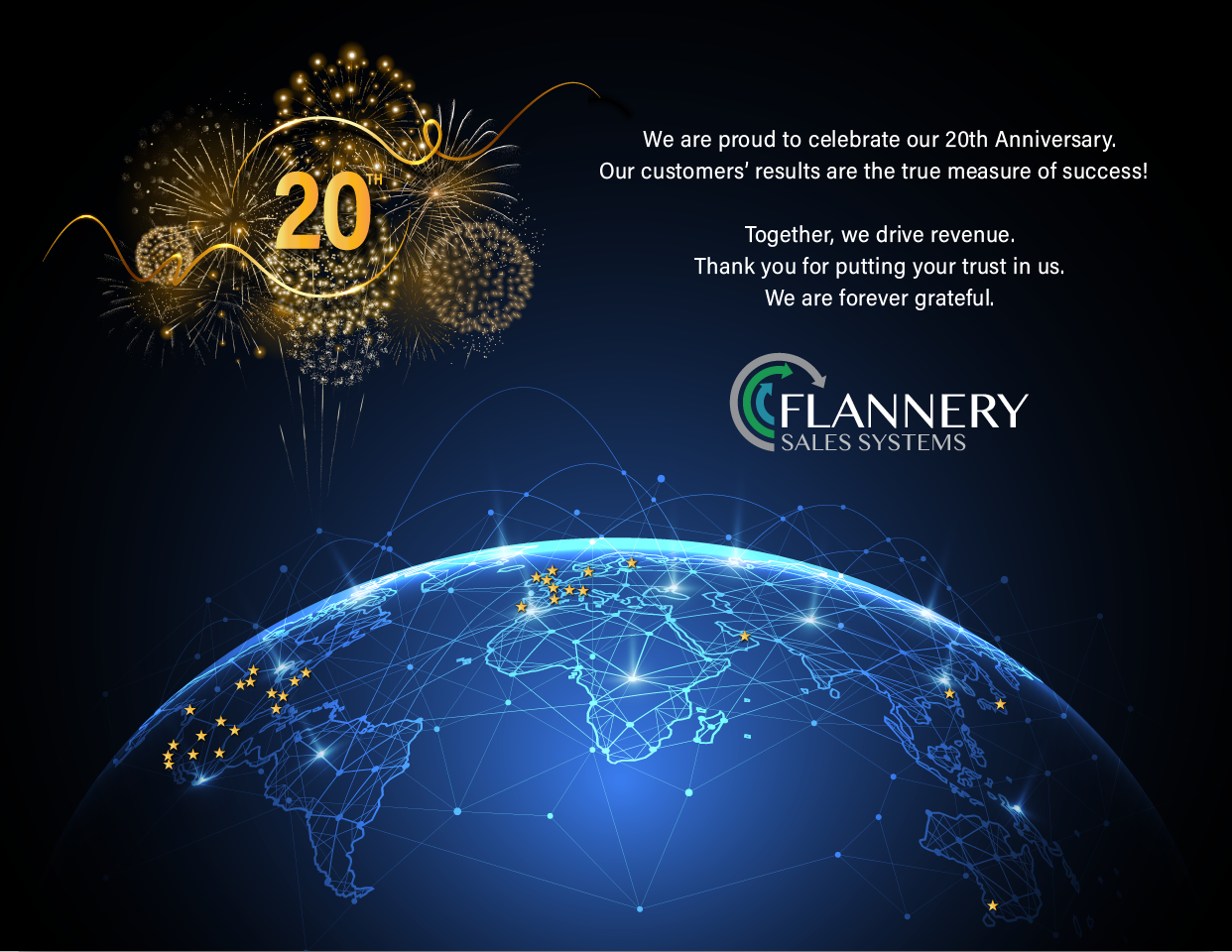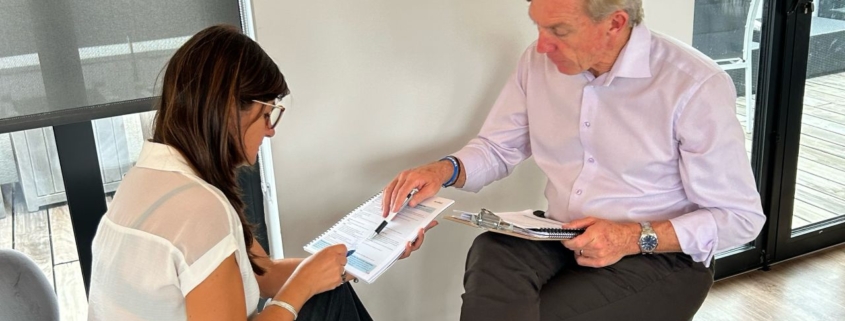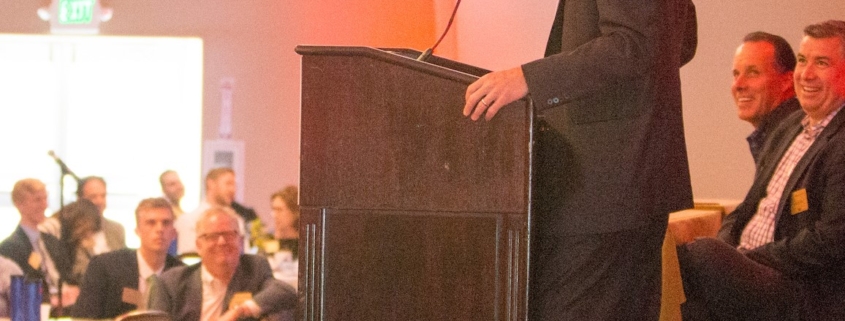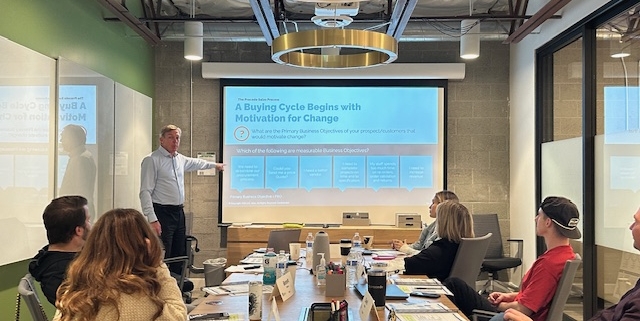John speaks with Selling Powers’ Gerhard Gschwandtner about the one moment that made it all work for him when starting his sales training organization.
In the fast-paced world of sales, success hinges on more than just having a great product or service—it’s about reaching the right people. All too often, sales teams focus on delivering the perfect pitch but miss the mark by not engaging the true decision-makers. Identifying and speaking to the key players, those with the power to influence and make final decisions, can make all the difference between closing a deal or losing an opportunity. Knowing strategies to ensure you’re connecting with the right individuals in your sales process, helps you to maximize your efforts and boost your success rate.
In today’s competitive market, a well-defined commercial strategy is essential for achieving long-term success in sales. But what separates high-performing sales teams from those that struggle isn’t just the strategy itself—it’s how effectively that strategy is executed.
Tactical execution transforms a high-level commercial vision into real, measurable results.
Let’s explore the key elements of tactical execution in sales, and how businesses can align their teams to ensure every move propels them closer to their goals.
What Is TECS?
Tactical execution refers to the specific, actionable steps taken to bring a broader commercial strategy to life. While commercial strategy focuses on the long-term vision—such as market positioning, customer acquisition, and revenue goals—tactical execution is about the how. It’s the day-to-day Sales activities that ensure sales targets are met, pipelines are built, and relationships with customers are strengthened.
In essence, TECS translates your strategy into action. Without it, even the best commercial strategy will fall flat.
- Define Clear Objectives and Metrics
One of the first steps in tactical execution is ensuring every team member knows the specific objectives they are working toward. Sales leaders must communicate clear KPIs that align with strategic goals, such as:
- The number of qualified leads generated.
- Conversion rates at various stages of the sales funnel.
- Average deal size or customer lifetime value.
- Use Customized Sales Tools for Conversations
Sales teams can no longer rely on instinct alone. The use of tools that are created for market specific applications for your product and services are essential. Forrester Research says only 26% of sellers know how to articulate the value their company provides. Don’t leave it to chance that the other 74% will get this right. Develop and adopt the use of tools in prep and Coaching calls.
- Align Cross-Functional Teams
Successful execution depends not just on sales but on a harmonious effort across marketing, customer success, and product teams. Cross-functional alignment ensures that everyone is rowing in the same direction.
Sales leaders must promote open communication between these departments to create a unified approach to achieving commercial goals. Regular interdepartmental meetings and collaboration tools, such as Slack or Microsoft Teams, can foster this alignment.
- Continuous Improvement and Adaptation
The business landscape is constantly evolving, and so too must sales tactics. TECS isn’t a one-time event; it’s an ongoing process of refinement. Adapting to changing market conditions or buyer preferences ensures that teams remain agile and ready to pivot when needed.
- Accountability
For tactical execution to succeed, every sales team member needs to be held accountable for their performance. Clear accountability fosters responsibility, but empowerment fuels innovation.
- Effective Sales Training and Coaching
Finally, none of the tactics will work without the proper skill set. Continuous sales training and coaching are critical for ensuring that your team has the expertise needed to execute the strategy.
Sales teams must be equipped with:
- Conversation tools that allow them to present value effectively.
- Negotiation skills to handle objections.
- The ability to understand customer pain points and offer relevant solutions.
Conclusion
Tactical execution bridges a company’s commercial strategy and its success in the marketplace. By breaking down big-picture goals into clear, measurable actions and aligning sales efforts with other departments, businesses can effectively execute their strategy to drive revenue growth.
Join a select group of 30 director-level peer experts for a breakout discussion on best practices for stopping revenue leaks and driving revenue growth.
You don’t want to miss this opportunity to transform your approach to revenue growth and secure long-term success for your organization.
Session highlights:
- Equip yourself with tools and strategies to identify and eliminate revenue leaks, ensuring sustained revenue growth.
- Learn from real-world case studies to develop a robust revenue leak prevention strategy.
- Discover how to diagnose common revenue loss sources, quantify their financial impact, and implement effective solutions.
- Engage in a breakout session with peers to share best practices and collaborate on strategies.
- Walk away with a clear roadmap to optimize your revenue management processes and achieve your financial goals.
Masterclass experts:
| John E. Flannery President Flannery Sales Systems |
Gerhard Gschwandtner Founder and CEO Selling Power |
|
Note: Seating is limited and the organizers reserve the right to deny access to anyone that doesn’t fit the level of qualification required for this Masterclass.
Trust is a crucial aspect of business and relationships. Developing trust over the duration of a customer relationship takes attention and focus. Creating a good first impression can go a long way in establishing trust in business relationships. The initial encounter sets the tone for future interactions and can significantly impact how others perceive you or your company.
I’ve shared how the concept of trust was uniquely presented to me as I went through airport security on an international trip. After responding to the standard questions, the security agent asked a final question, “Should I trust you?” I answered in the affirmative, of course, but the unconventional question got me thinking!
Reflecting on the experience – which was used to gauge my response under pressure and assess my overall demeanor – I gained real insight into how trust is perceived and established. In business and personal relationships, trust develops through a combination of communication, consistency and demonstrated reliability. Verbal and non-verbal cues also play a significant role in establishing trust.
When meeting with a prospect for the first time, how do you establish trust? This is not the same type of trust you have with a family member or friend. It’s the trust that allows someone to have a candid conversation about their business issues.
Plenty is written about what not to do, such as being pushy, talking too much or just falling into stereotypical selling behavior. But in that critical window of time (which can be as short as a minute) how do you make a connection that allows the prospect to feel comfortable sharing information with you? How do you show that you genuinely care about understanding their business situation?
Here are three actionable steps to help establish trust during your initial interactions.
- Be prepared with questions about the prospect’s organization and needs, not statements or brochures about your product, service or organization.
- Allow the prospect to set the pace of the meeting. Help the prospect discover their needs by listening to what they say. A few well-constructed questions will help the prospect come to their own conclusion. And only offer suggestions for items to review after they have expressed their priorities.
- Be sincere. Being sincere means doing what you say you are going to do. The first way to establish sincerity is a prompt, written follow-up after that initial meeting that captures the important components for the prospect and their organization.
You can shape the trajectory of a long-term customer relationship by establishing trust early on. While some think trust takes years to cultivate and develop, the agent at the airport thought it could take one second, a reaction to a question. One thing is certain; establishing trust is a central component of all healthy relationships. Successfully lay the foundation and watch a lasting and fruitful customer relationship unfold.
Have you ever spent several thousand dollars (and then some) on training only to see no change or short-term boosts at best? If your sales training is striking out, it’s probably due to a lack of prep and follow-up. There are ways to achieve long-term positive changes through training but you’ve got to know what you’re signing up for and consider some clear-cut strategies.
For starters, different types of training accomplish different goals. Over the years we’ve been hired by clients for one-hour kick-off motivational keynotes, three-day intensive sales process training and everything in between. We’ve learned a few things along the way including – sales training conducted as an “event” simply doesn’t work.
If your goal is to transform your organization so that it’s achieving goals like increasing sales or increasing profit margin, the training itself is only 10% of the overall process. To make your training investment stick, consider the following before you spend valuable dollars.
You Need an Implementation Plan. Start your transformation with the end in mind. What metrics will be used to measure the success of the salespeople, manager and related team member(s)? Will leadership hold them accountable for achieving these goals? For example, to achieve 10% growth in revenue you’ve calculated that each salesperson needs to meet with one additional qualified prospect per day. The skill being developed is new business development. How will you hold each person accountable for that number? The measure of success could be an email the salesperson sends to the customer that summarizes their meeting. This is an auditable measure that a manager and a manager’s manager can use. The email not only provides quantitative measurement, but the leaders, and even the CEO, can review the email and see the quality of customer interactions. How well was the new skill captured in the follow-up e-mail? Does this contact meet the defined metric of adding one new qualified prospect per day?
Have a Strategy to Reinforce and Coach Learned Skills.
Sales skills that are enhanced or gained in a training session are 80% forgotten after the first 30 days. Why? When not practiced or measured with a 3rd party, there’s often little to no change in behavior. The formula for reinforcement is: a) apply the learned skill b) share results with the coach and then c) reinforce the behavior. For coaching, first get attendees to apply new skills in the field. This could be verbal or written sales skills – but only introduce one skill at a time. Then it’s time to coach. Ask specific questions about the desired outcome. For the example above, did the salesperson meet (or converse) with one new, qualified prospect a day? Frame questions that help them understand what went well and where correction needs to happen. Next, ask them how they can improve their results. Effective coaches help people find their own answers. Finally, ask what would happen if the next time they tried … and then insert a specific recommendation. Reviewing a video of someone good at executing a skill is a way to fine-tune a new sales method. Rehearsing a future conversation with a recording is also a good practice.
When changes are reinforced, salespeople will remember how inspired and motivated they were at training. And with effective measuring, they’ll know these skills and behaviors will be recognized.
Immediately following Sales Process Workshops in Spain and France, John is interviewed by Cristina Lourenco from Acolad on how customized, focused and actionable sales training turns into revenue. Have a listen to what happens before, during and especially AFTER the training that gets results.
John and the FSS team will be in Europe for 3 weeks in April working with a global commercial translation organization. If you are in Paris or Sevilla, and would like to meet for a coffee or Spring walkabout, please reach out to John at john@drive-revenue.com. Ole and Merci!
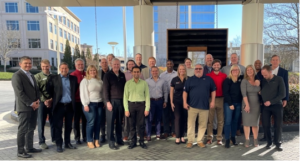
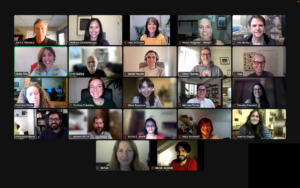
There’s no doubt that sales training is an investment; but, when done right, it’s one of the smartest investments your company can make. Small improvements in selling techniques can make a huge impact on revenue. What would it mean to your sales results if your average reps were producing as well as your top performers?
We have 17 years of experience training sales teams, which means equipping them with the skills and tools they need to achieve sales goals. We are different from other training organizations because we don’t teach a one-size-fits-all course. Our curriculum is customized to your unique sales process and selling environment. Your reps will leave our course having learned and practiced the techniques they need to successfully engage with prospective customers to drive revenue.
We provide both in-person live sales training along with virtual sessions. While we love to engage in person with your teams, if you do opt for an online training experience, you can rely on our fine-tuned virtual event platform that allows you to maximize learning opportunities through group break out discussions, private and public chat features and a one-on-one coaching.
Whether you choose to hold your sales training in-person or virtually, take advantage of our Online Learning Portal which has helped hundreds of our customers’ salespeople reinforce what the sales skills they acquire in our workshops.

